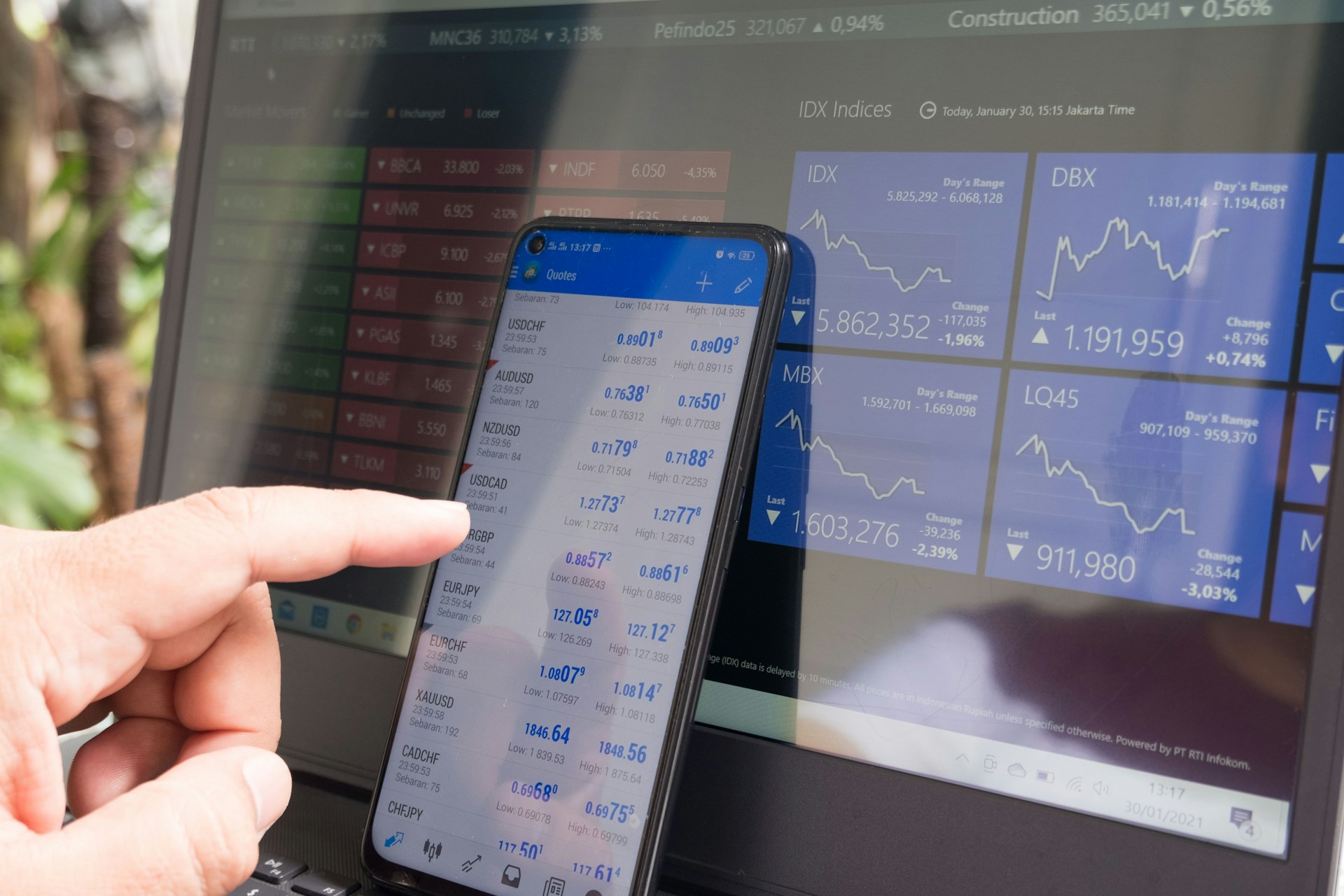For Forex traders, charts are the visual cornerstone of their analytical process. These comprehensive representations of price movements across various timeframes offer invaluable insights into market trends and potential trading opportunities. This guide unveils the intricacies of Forex charts, delving into how traders can leverage technical analysis tools like indicators and chart patterns to decipher market behavior. By mastering the art of chart analysis, traders can gain a crucial edge in navigating the dynamic world of Forex.
Basics of Forex Charts
Understanding the basics of Forex charts is fundamental for any trader looking to navigate the dynamic currency markets successfully. These charts serve as visual guides, providing insights into historical price movements and aiding in the prediction of future trends.
Forex charts come in various types, with Line, Bar, and Candlestick charts being the most common. Line charts offer a simplified view, depicting the closing prices over a specific period. Bar charts provide more detailed information, displaying the high, low, open, and close prices. Candlestick charts, widely favored for their visual appeal, convey similar information but with added clarity on market sentiment through color-coded candles.
In essence, these charts act as a trader’s window into the market, offering a graphical representation of price dynamics that facilitates quick and informed decision-making. Mastering the basics of these chart types lays a solid foundation for delving deeper into the world of Forex trading analysis.
Reading Forex Charts
Understanding how to read Forex charts is paramount for traders seeking to interpret market trends effectively.
Interpreting Timeframes
The first step in reading a Forex chart involves understanding different timeframes. Charts can represent price movements over various intervals, such as minutes, hours, days, or even months. Traders need to select the timeframe that aligns with their trading strategy and goals.
Analyzing trends, support, and resistance levels are crucial aspects of reading Forex charts. Identifying trends involves recognizing the general direction in which prices are moving, whether upward (bullish), downward (bearish), or sideways (neutral). Support and resistance levels indicate price levels where the market has historically struggled to move below or above, respectively.
By grasping these foundational elements, traders can unlock the potential of Forex charts to make informed decisions and enhance their trading strategies.
Technical Indicators
| Indicator | Description | Application |
| MACD | Moving Average Convergence Divergence | Identifying trend strength and potential reversals |
| RSI | Relative Strength Index | Evaluating overbought or oversold conditions |
| Moving Averages | Smoothed price trends over a specified period | Highlighting trend direction and potential entry/exit points |
Technical indicators play a pivotal role in Forex chart analysis, providing traders with additional layers of insight into market dynamics.
- MACD (Moving Average Convergence Divergence): The MACD is a versatile indicator that helps identify trend strength and potential reversals. By comparing short-term and long-term moving averages, traders gain insights into the momentum of a currency pair.
- RSI (Relative Strength Index): RSI is valuable for evaluating whether a currency pair is overbought or oversold. This oscillator-type indicator measures the speed and change of price movements, aiding traders in identifying potential reversal points.
- Moving Averages: Moving averages smooth out price data over a specified period, helping traders identify trends. They are particularly useful for highlighting trend direction and potential entry or exit points in the market.
By incorporating these technical indicators into their analysis, traders can make more informed decisions, adding depth and precision to their trading strategies.
Using Multiple Charts
Efficient traders understand the power of using multiple charts simultaneously, harnessing diverse perspectives for a comprehensive analysis.
Benefits of Multiple Charts:
- Holistic View: Examining multiple charts allows traders to gain a holistic view of the market. By considering various timeframes or currency pairs, they can better understand overall trends and potential correlations.
- Confirmation Signals: When signals align across different charts, it provides confirmation of potential trade opportunities. This convergence enhances the reliability of signals, reducing the risk of false positives.
- Diversification of Analysis: Different charts may reveal unique aspects of market behavior. Utilizing charts with distinct technical indicators or timeframes provides a diversified analysis approach, helping traders make more well-rounded decisions.
Integrating Different Timeframes for Analysis:
- Short-Term and Long-Term Perspectives: Combining short-term and long-term charts helps traders identify both immediate market conditions and broader trends. This dual perspective aids in fine-tuning entry and exit points.
- Avoiding Overtrading: Utilizing multiple timeframes can prevent overtrading by offering a broader context. Traders can avoid making impulsive decisions by considering the overall market picture before executing trades.
In essence, using multiple charts enhances a trader’s ability to make nuanced and well-informed decisions, fostering a more robust and adaptable approach to the dynamic Forex market.
Fundamental Analysis
In the world of Forex trading, fundamental analysis is a cornerstone, providing traders with a deep understanding of the economic factors influencing currency movements.
Brief Explanation of Fundamental Analysis:
Fundamental analysis involves evaluating economic, social, and political factors that impact currency values. It goes beyond chart patterns and technical indicators, focusing on the intrinsic value of a currency based on external events and conditions.
- Economic Indicators: Traders closely monitor economic indicators such as GDP growth, employment rates, and inflation. These indicators offer insights into a country’s economic health and can influence the strength or weakness of its currency.
- Interest Rates: Central banks play a pivotal role in Forex markets by setting interest rates. Changes in interest rates can have a profound impact on currency values, as higher rates attract foreign investment, strengthening the currency.
Combining Fundamental and Technical Analysis:
- Holistic Approach: Successful traders often combine fundamental and technical analysis to form a comprehensive strategy. By understanding the broader economic context (fundamental analysis) and specific price trends (technical analysis), traders make more informed decisions.
- Market Sentiment: Fundamental analysis helps gauge market sentiment. Political events, economic policies, or geopolitical tensions can influence trader perceptions, affecting currency values. Traders who grasp these factors can anticipate market reactions.
By incorporating fundamental analysis into their toolkit, traders gain a more profound understanding of the forces shaping currency movements. This comprehensive approach enables them to navigate the Forex market with greater confidence and strategic insight.
Developing a Trading Strategy
Developing a robust trading strategy is the linchpin of success in the complex realm of Forex trading. It involves a careful blend of analytical skills, risk management, and a clear understanding of personal goals.
Traders embark on this journey by setting realistic objectives and defining their risk tolerance. Establishing clear goals provides a framework for decision-making, while an understanding of risk tolerance ensures that traders can weather the inevitable ups and downs of the market without compromising their financial well-being.
As traders formulate their strategy, they often incorporate elements of both technical and fundamental analysis. This amalgamation allows for a nuanced approach, taking advantage of both historical data and real-time market influences. A well-defined strategy not only guides entry and exit points but also includes provisions for risk management, ensuring that potential losses are controlled, and profits are optimized. In essence, developing a trading strategy is akin to crafting a roadmap through the intricate landscape of Forex trading, providing clarity and direction in the pursuit of financial goals.
Common Mistakes to Avoid
In the exhilarating world of Forex trading, avoiding common pitfalls is as crucial as crafting a sound strategy. Here, we explore some prevalent mistakes that traders often make and the importance of steering clear of them:
- Overreliance on Charts: One common error is placing excessive trust in technical analysis without considering broader market factors. While charts provide valuable insights, an exclusive reliance on them can lead to oversight of critical economic events or geopolitical developments that significantly influence currency movements.
- Ignoring Fundamental Factors: Conversely, neglecting fundamental analysis is another prevalent mistake. Relying solely on technical indicators without considering economic indicators, interest rates, or political events can leave traders blindsided by sudden market shifts that could have been anticipated through a broader analysis.
- Lack of Risk Management: Failing to implement robust risk management practices is a grave mistake. Traders who neglect setting stop-loss orders or do not diversify their portfolios adequately expose themselves to significant financial risks. Effective risk management is integral to preserving capital in the face of market volatility.
- Emotional Decision-Making: Allowing emotions to dictate trading decisions is a trap many fall into. Fear and greed can cloud judgment, leading to impulsive actions. Successful traders cultivate discipline and stick to their strategies, resisting the temptation to deviate based on emotional reactions.
By being aware of these common mistakes, traders can fortify their approach, minimizing risks and enhancing their prospects for success in the dynamic and challenging environment of Forex trading.

